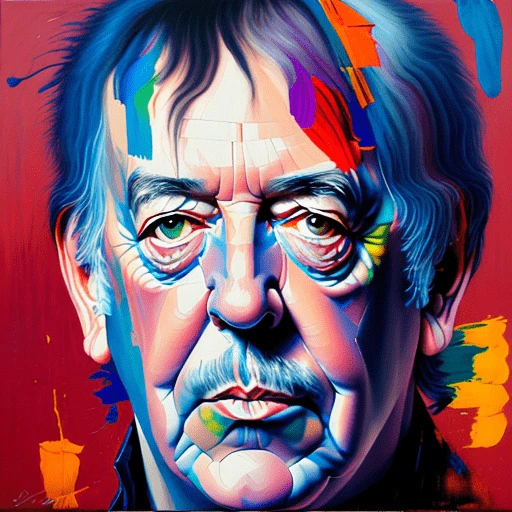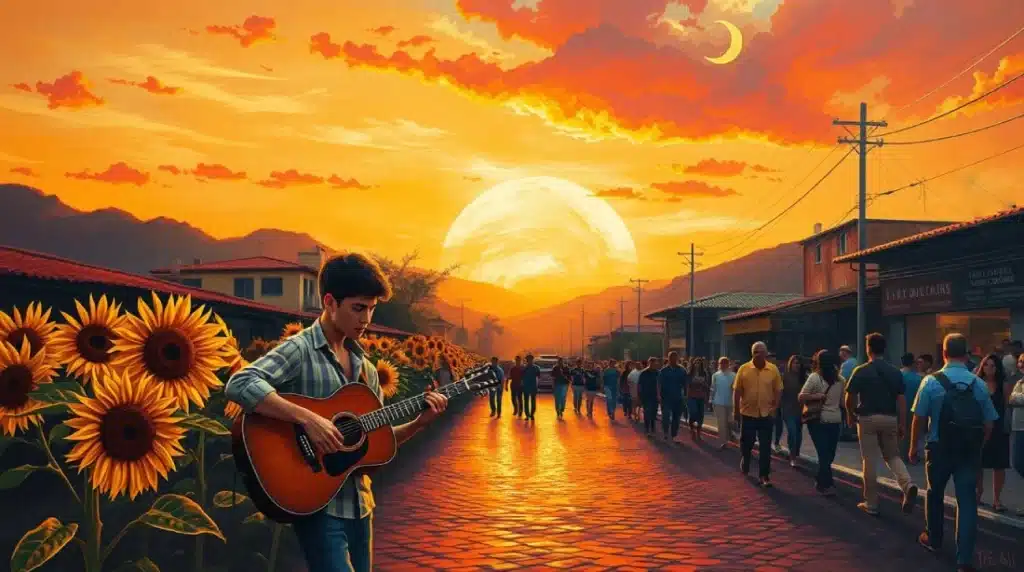A Whiter Shade of Pale: Unraveling Procol Harum’s Enigmatic Masterpiece
A Whiter Shade of Pale
Have you ever listened to a song that seemed to transport you to another realm, leaving you both mesmerized and perplexed? If so, you’ve likely experienced the magic of “A Whiter Shade of Pale.” This iconic track, released in 1967 by the British rock band Procol Harum, has captivated audiences for over half a century with its haunting melody and enigmatic lyrics. But what’s the story behind this musical masterpiece? Let’s embark on a journey to unravel the mysteries surrounding one of the most beloved songs in rock history.
The Birth of a Classic

Procol Harum’s Formation
Picture this: it’s the swinging sixties in London, and the air is thick with creativity and musical innovation. In this electrifying atmosphere, a group of young musicians came together to form Procol Harum. The band’s lineup included Gary Brooker on vocals and piano, Matthew Fisher on organ, Ray Royer on guitar, David Knights on bass, and Keith Reid as the lyricist.
But here’s the kicker – “A Whiter Shade of Pale” wasn’t just their debut single; it was practically the first thing they created together as a band. Talk about starting with a bang!
Writing Process of the Song
Now, you might be wondering, “How does a band create such a masterpiece right out of the gate?” Well, it’s a tale of serendipity and talent colliding. The song’s music was primarily composed by Gary Brooker, inspired by Johann Sebastian Bach’s music, particularly his cantatas. Meanwhile, Keith Reid, the band’s lyricist, penned the cryptic words that would go on to puzzle and fascinate listeners for generations.
Lyrical Mystique
Inspiration Behind the Lyrics
Ah, the lyrics – the heart of the enigma. Keith Reid once remarked that the words came to him when he overheard someone at a party say, “You’ve turned a whiter shade of pale.” This phrase stuck with him, sparking a stream of surreal imagery that would become the song’s verses.
But what do vestal virgins, Miller Lite, and seasick sailors have to do with each other? That’s the beauty of it – the connection is as clear as mud, and that’s precisely what makes it so intriguing.
Interpretations and Theories
Over the years, fans and critics alike have spun countless theories about the song’s meaning. Some see it as a drug-induced hallucination, others as a sexual encounter, and still others as a Chaucerian tale reimagined for the psychedelic era. The truth? Well, as Reid himself has said, it’s open to interpretation. Isn’t that the hallmark of great art – the ability to mean different things to different people?
Musical Composition
Baroque Influences
Let’s talk about that unforgettable melody. If you’ve ever thought it sounded a bit… well, classical, you’re not wrong. The song’s organ riff is heavily influenced by Bach’s “Air on the G String” and “Sleepers, Wake!” This fusion of classical baroque with rock was groundbreaking at the time, creating a sound that was both familiar and utterly new.
Organ Riff and Its Origins
Matthew Fisher’s organ playing is the backbone of the song’s sound. The story goes that Fisher came up with the iconic organ part during the recording session, improvising based on Bach’s work. It’s a testament to the band’s chemistry that such a crucial element came together so spontaneously.
Recording and Production
Studio Sessions
Picture a small studio in London, crammed with equipment and nervous excitement. The band recorded the song in just a few takes, capturing the raw energy and slightly rough edges that would become part of its charm. It wasn’t polished to perfection – it was real, immediate, and powerful.
Technical Aspects
Despite its complex sound, the recording process was relatively straightforward. The band used a four-track tape recorder, which was state-of-the-art at the time. This limited technology meant that the musicians had to nail their parts in a single take, adding to the song’s live feel and organic quality.
Release and Reception
Initial Public Response
When “A Whiter Shade of Pale” hit the airwaves in May 1967, it was like a bolt from the blue. Listeners were entranced by its unique sound and mysterious lyrics. It quickly became the soundtrack of the “Summer of Love,” capturing the spirit of an era in just over four minutes of music.
Chart Performance
The song’s popularity translated into chart success. It shot to number one in the UK, staying there for six weeks, and reached number five in the US. But its impact went far beyond mere numbers – it became a cultural touchstone, a song that defined a generation.
Cultural Impact
Influence on Other Artists
The ripples from “A Whiter Shade of Pale” spread far and wide across the music industry. Countless artists have cited it as an influence, from prog rock pioneers to modern indie bands. Its blend of classical and rock elements opened up new possibilities for what pop music could be.
Use in Popular Media
From movies to TV shows, the song has been used to evoke a sense of nostalgia, mystique, or the spirit of the 60s. It’s featured in films like “The Big Chill” and “Oblivion,” cementing its place in popular culture beyond the realm of music.
Legal Battles
Authorship Disputes
As with many great works of art, “A Whiter Shade of Pale” has seen its share of controversy. In 2005, Matthew Fisher sued for co-authorship rights, claiming that his organ part was crucial to the song’s composition. This led to a protracted legal battle that would last for years.
Resolution and Aftermath
In 2009, the House of Lords ruled in Fisher’s favor, granting him co-authorship rights for the music (though not retroactively for royalties). This decision highlighted the collaborative nature of music creation and set a precedent for future cases in the industry.
Legacy and Accolades
Awards and Recognition
The song’s impact has been recognized time and again. In 1977, it was named joint winner (along with “Bohemian Rhapsody”) of the Best British Pop Single 1952–1977 at the BRIT Awards. In 1998, it was inducted into the Grammy Hall of Fame. Not too shabby for a debut single, eh?
Enduring Popularity
Even after more than 50 years, “A Whiter Shade of Pale” continues to captivate new generations of listeners. It’s been streamed millions of times on platforms like Spotify and YouTube, proving that great music truly is timeless.
Covers and Reinterpretations
Notable Cover Versions
The song’s universal appeal is evident in the diverse array of artists who have covered it. From Annie Lennox to Willie Nelson, each interpretation brings something new to the table while retaining the essence of the original.
Adaptations in Different Genres
It’s not just straightforward covers – “A Whiter Shade of Pale” has been adapted into various genres. There are classical orchestral versions, jazz interpretations, and even electronic remixes. Each adaptation showcases the song’s versatility and enduring appeal.
The Song’s Meaning
Band Members’ Perspectives
Interestingly, even the band members have varying interpretations of the song. Gary Brooker has suggested it’s about a relationship, while Keith Reid maintains that it’s open to interpretation. This ambiguity is part of what keeps the song fresh and relevant decades after its release.
Evolving Interpretations Over Time
As society changes, so do interpretations of the song. What might have been seen as a drug reference in the 60s could be interpreted as a commentary on social media disassociation today. The song’s ability to evolve with its listeners is a key to its longevity.
A Whiter Shade of Pale: lyrics meaning
Technical Analysis
Chord Progression
For the musically inclined, the song’s chord progression is relatively simple yet effective. It primarily uses a descending bassline that was common in baroque music, creating a sense of movement and melancholy that underpins the dreamy lyrics.
Vocal Performance
Gary Brooker’s soulful, slightly raspy voice is the perfect vehicle for the song’s mystical lyrics. His delivery strikes a balance between emotional and detached, adding to the song’s otherworldly quality.
“A Whiter Shade of Pale” in the Digital Age
Streaming Statistics of A Whiter Shade of Pale
In the era of digital music, “A Whiter Shade of Pale” continues to thrive. It’s been streamed hundreds of millions of times across various platforms, introducing the song to new listeners every day.
Social Media Presence
The song has found new life on social media platforms like TikTok, where users create content around its iconic intro or use it as a soundtrack for various trends. This digital renaissance ensures that the song remains relevant to younger generations.
The Song’s Place in Rock History
Comparisons with Contemporaries
When compared to other hits of its era, “A Whiter Shade of Pale” stands out for its unique blend of classical and rock elements. While many songs from the 60s sound dated today, this track maintains a timeless quality that transcends its era.
Influence on Future Generations
The song’s impact can be heard in the work of countless artists who followed. Its sophisticated approach to pop music paved the way for progressive rock and influenced bands across various genres, from Pink Floyd to Radiohead.
Conclusion
As we’ve seen, “A Whiter Shade of Pale” is more than just a song – it’s a cultural phenomenon, a musical enigma that has fascinated listeners for over half a century. Its blend of baroque influences, poetic lyrics, and unforgettable melody created something truly unique in the landscape of pop music.
From its humble beginnings in a London studio to its status as a global classic, the song has weathered legal battles, shifting musical trends, and the test of time. Its enduring popularity is a testament to the power of music to connect with people on a deep, almost inexplicable level.
As we continue to listen to and discuss “A Whiter Shade of Pale,” one thing becomes clear – some mysteries are better left unsolved. The song’s ambiguity, its ability to mean different things to different people, is precisely what makes it so special. In a world that often demands clear-cut answers, perhaps there’s something refreshing about a piece of art that invites us to simply listen, feel, and interpret for ourselves.
So the next time you hear those iconic organ notes drifting through the air, take a moment to appreciate the magic of “A Whiter Shade of Pale.” After all, isn’t it wonderful that after all these years, we’re still turning cartwheels ‘cross the floor, still trying to decode this musical enigma? And isn’t that, in itself, a beautiful thing?
FAQs
Obs-1.: A abreviação AI ou IA, quando utilizadas neste artigo e em todo o site, quer dizer “artificial intelligence” ou “Inteligência Artificial”.
Obs-2.: Algumas das imagens utilizadas neste artigo foram criadas com AI em Playground AI, Leonardo AI, DZine e em Labs Google.
Obs-3.: Veja mais artigos em Fast Art Web
See also Exploring the Magic of David Bowie’s “Life on Mars”








